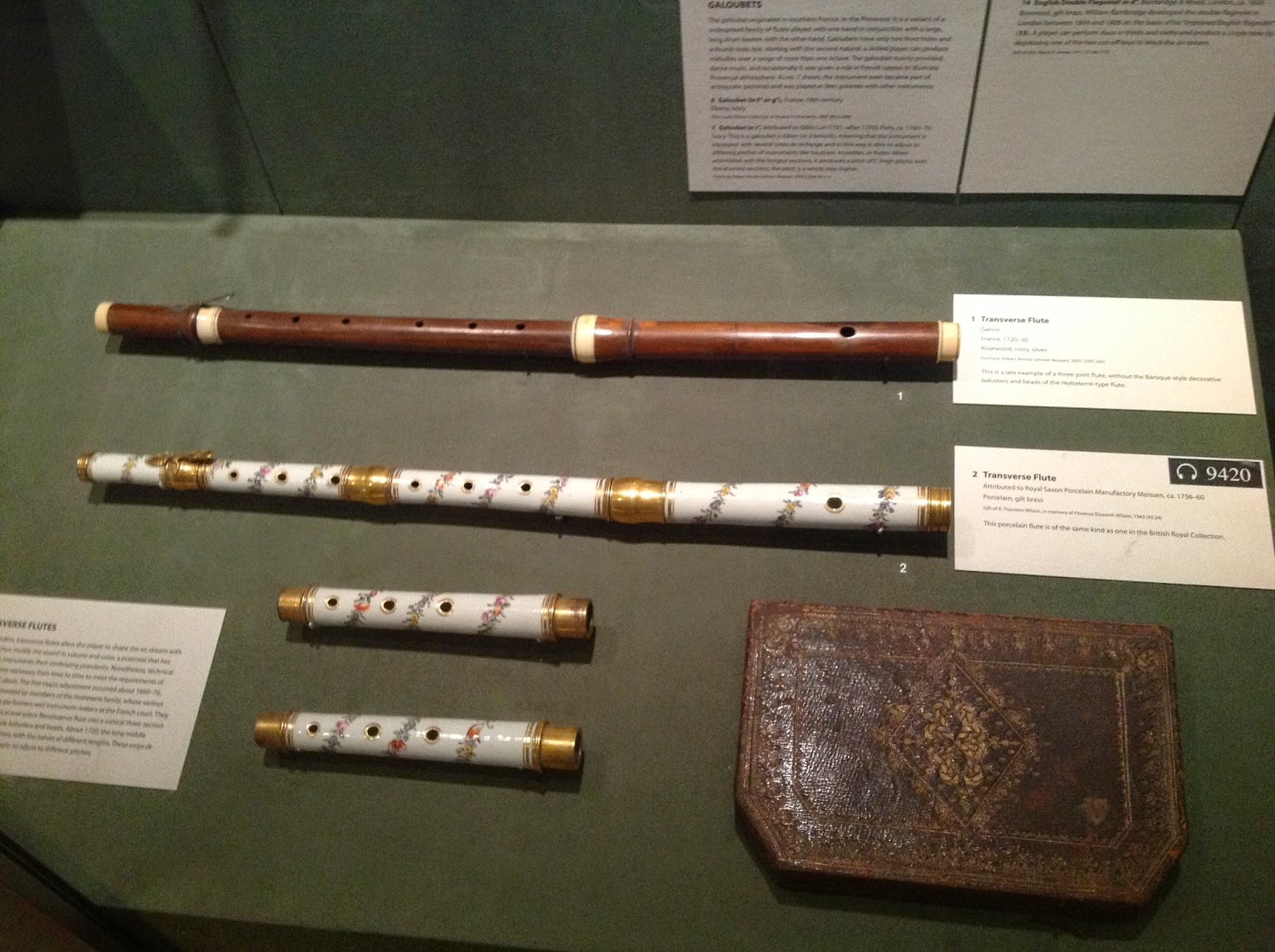Intonation is a critical issue for any instrument in an ensemble but intonation errors can be especially revealing in the flute section. This is because they are often playing the highest parts in the ensemble leaving them the most audibly out of tune.
During ensemble rehearsals, it is common to make slight adjustments in order to conform to the pitch tendencies of your instrument and the rest of the group. To insure that your instrument is in tune, remember these steps:
1) Warm-up your instrument. You can start this by completely covering the embouchure hole with your mouth and blow air through the instrument while closing all of the keys. Next, begin to warm up your embouchure. As you play, your flute will become warmer. Keep in mind that this will likely cause the flute to go sharp if you have not warmed up very much before you tune.
2) When you begin a rehearsal, be sure to check your intonation with a piano or to the other instruments in your ensemble. In an orchestral setting, the oboe usually gives the tuning pitch as it is centrally located and has a naturally prominent sound. If you get the chance, work with an electronic tuner or tuning fork before going to rehearsal. That way, you will only need to adjust slightly (if at all) when the ensemble tunes. After I have tuned and warmed-up a little, I sometimes like to practice my scales and etudes against a droned pitch on my metronome. You can program most electronic metronomes to hold drones on pitches at different ranges which can really help intonation problems in different registers.
3) Remember that as the temperature rises and falls so does the pitch of your instrument. Listen carefully to the other instruments to determine how you need to adjust. To lower your pitch you can, drop your jaw and lower your head or pull your upper lip down to direct your airstream lower into the flute.
Also, do not forget that when tuning chords with a wind ensemble, the third of a major chord should be lowered a little and raised a little in minor chords. This is because contemporary tuning practices are only a compromise that allows us to play in all keys with a tolerable amount of incorrect intonation. When playing with variable pitched instruments, we can approximate the naturally occurring physics of intervals ringing in tune by adjusting the thirds.
There are certain pitch tendencies to be aware of on the flute:
In the low register, B, C, C-sharp and F tend to be low. In the middle register, C-sharp tends to be high and F tends to be low. In the high register, D tends to be low and E-flat, E, F-sharp, G-sharp, B, and C are high. The easiest method of modifying the pitch is changing the direction of the airstream as described in the third bullet above, but there are also alternate fingerings that can be considered in order to facilitate technique and intonation. Some teachers may believe that there is only one ‘good’ fingering for each note on the flute, but keep in mind the wise words of flutist Michel Debost, “I soon realized that morality and ethics have nothing to do with fingerings. Musicality is the issue, because good can be unmusical and bad more fun”. Feel free to experiment with various fingerings and make decisions based on your liking. Special fingerings can often be an easy way to compensate for intonation differences between instrument types.
The dynamic level you are playing will also affect intonation. A forte is naturally resonant on the flute, but be careful not to let it become uncontrolled. Keep in mind that the pitch tendency is to go sharp while playing forte, and this partially due to uncontrolled air, timbre, and focus. To successfully carry the forte, you must keep a low center of gravity, open the throat, and remove any obstacles of the air column.
Playing piano requires more concentration and effort. It is easy to let softer passages feel dead because of the lack of power in the sound. It is up to the player to provide artificial sustenance to drive piano passage work. The pitch tendency is to go flat, and this is due to slower and unfocused air. It is important to avoid closing off the throat while playing piano. Be sure to keep the cavities open. Imagining the feeling of yawning will help open the throat.
It is important to accurately portray the different dynamic ranges, but do not do so at the expense of the musicality of the passage! Keep in mind the pitch tendencies that these dynamics entail and exercise control over your sound. Exposing music students to these principles at a young age can only help them in their future as musicians.
---
Further Reading:
Toff, Nancy. The Flute Book :A Complete Guide for Students and Performers. Thi ed. New York, NY; 4: Oxford University Press, 2012; 2012. The Oxford Musical Instrument Series.
Toff, Nancy. The Flute Book :A Complete Guide for Students and Performers. Thi ed. New York, NY; 4: Oxford University Press, 2012; 2012. The Oxford Musical Instrument Series.















